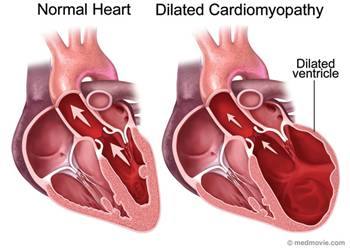AbstractThe prevalence of coronary artery disease in female patients is increasing due to changing lifestyle patterns including cigarette smoking, diabetes and stress. Since women are delaying childbearing until older age, acute coronary syndrome will more frequently occur during pregnancy. Although rare, acute coronary syndrome during pregnancy often has devastating consequences. It is associated with increased maternal and neonatal mortality and morbidity compared with the nonpregnant situation. Furthermore, it constitutes an important problem for the patient and the treating physician, because the selection of diagnostic and therapeutic approaches is greatly influenced not only by maternal, but also by fetal safety. 
IntroductionCoronary heart disease is a major health problem. Although rare in pregnant women, during pregnancy acute coronary syndrome (ACS) is estimated to occur three- to four-times more often compared with the nonpregnant women in this age group.
...
Read more »
|
Dilated cardiomyopathy or DCM is a condition in which the heart becomes weakened and enlarged and cannot pump blood efficiently. The decreased heart function can affect the lungs, liver, and other body systems.
|
Background
Idiopathic ventricular tachycardia in patients with an anatomically
normal heart is a distinct entity whose management and prognosis differs
from ventricular tachycardia associated with structural heart disease.
The tachycardia's QRS morphology on surface electrocardiogram (ECG)
predicts the site of origin and is commonly classified as right
ventricular tachycardia or left ventricular tachycardia. Patients
generally tolerate the tachycardia and sudden cardiac death is rare in
this patient population. Treatment options include pharmacotherapy or
catheter ablation. The prognosis of these patients remains excellent.
Observed Ventricular tachycardias (VT) are usually related to structural
heart disease. However in 10% of patients with VT, no structural heart
disease, metabolic/electrolyte abnormalities or long QT syndrome can be
found. These arrhythmias have been called idiopathic VT. They consist of
various subtypes defined by their clinical presentation (repetitive
monomorphic tachycardias, exercise-induced sustained ventricular
arrhythmias) and/or their underlying mechanism (adenosine sensitive
triggered arrhythmias, intrafascicular or interfascicular re-entrant
arrhythmias).
These arrhythmias have certain anatomic locations within the heart and
manifest specific electrocardiographic (ECG) patterns which help to
identify their site of origin. A characteristic common to most cases of
idiopathic ventricular tachycardia is good prognosis, although patients
should continue to have periodic cardiac follow-ups to rule out latent
progressive heart disease such as arrhythmogenic right ventricular
dysplasia or other forms of cardiomyopathies.
This review summarises common forms of idiopathic ventricular tachycardias that the general cardiologist should know (Table 1).
...
Read more »
|
a.THA ở phụ nữ có thai:
- THA có trước khi có thai: nên tránh các
thuốc UCMC, ức chế thụ thể AT1 của AG II. Thuốc chen beta giao cảm thời
kỳ đầu thai kỳ vì làm chậm sự phát triển của thai. Dùng ỏ Methyldopa có
tác dụng tốt.
- Tiền sản giật (tình trạng mang thai sau tuần thứ 20
mà trước đó HA bình thường, gồm: THA + phù + protein niệu). Thường gặp ở
lần thai đầu. Dùng thuốc: ỏ Methyldopa, chẹn beta giao cảm như
Atenolol, chẹn beta và alpha giao cảm như labetalol, giãn mạch trực tiếp
như hydralazine.
Không dùng: thuốc UCMC, chuốc chẹn thụ thể AG II,
thuốc chẹn dòng can xi có thể gây tụt HA, thuốc lợi tiểu gây giảm thể
tích máu qua rau thai.
b.THA ở người cao tuổi: hay gặp THA tâm thu đơn độc
Dùng thuốc : lợi tiểu thiazid / tương tự thiazid có hiệu quả đặc biệt ở
bệnh nhân có tuổi tương đương với thuốc ức chế can xi Dihyropiridin.
Hai nhóm thuốc này làm giảm bệnh tật và tử vong tim mạch do THA tâm thu
đơn độc . Các thử nghiệm gần đây cho thấy chỉ nên dùng thuốc chẹn bê ta
cho người cao tuổi khi có chỉ định như sau NMCT, đau thắt ngực hoặc suy
tim.
Chú ý: liều điều trị nên bắt đầu liều thấp. Nên hạ HA tới con
số thấp nhất mà người bệnh chịu đựng được (< 140/90 nếu có thể). c.Bệnh tim thiếu máu cục bộ: là dạng thường gặp nhất trong bệnh THA.
Bệnh nhân THA có cơn đau thắt ngực ổn định: thuốc chọn lựa đầu tiên
thường là ức chế õ, thuốc ức chế can xi tác dụng dài. Trường hợp có hội
chứng vành cấp) cơn đau thắt ngực không ổn định hoặc NMCT): nên bắt đầu
điều trị bằng ức chế õ và ức chế men chuyển. Trường hợp sau NMCT: thuốc
UCMC, ức chế õ và kháng aldosterol có ích lợi nhất, thuốc hạ mỡ máu và
thuốc aspirin cũng cần thiết.
d.Suy tim: là hậu quả của THA và bệnh thiếu máu cơ tim cục bộ.
Thuốc nên dùng là thuốc UCMC, UC beta, chẹn thụ thể AG II, đối kháng aldosterol, lợi tiểu quai.
e.THA và đột quị: THA là YTNC quan trọng trong điều trị dự phòng đột quị.
Trong
...
Read more »
|
I - ĐẠI CƯƠNG :
1/ Một số khái niệm:
+ HA là áp lực của dòng máu tác động lên thành động mạch, áp lực này được chi phối bởi các yếu tố sau:
- Sức bóp cơ tim .
- Tính đàn hồi thành mạch,
- Độ keo của máu,
- Yếu tố TK- TD tác động lên thành động mạch.
+
Ở người trưởng thành (>18 tuổi) khi đo HA theo phương pháp Korottkof
nếu HA tâm thu >= 140 mmHg và/hoặc HA tâm trương >=90 mmHg thì
gọi là tăng HA.
..............................HA tâm thu + 2 x HA tâm trương
+ HA trung bình = -----------------------------------------------
...
Read more »
|
1. ĐẠI CƯƠNG.
1.1 Định nghĩa:
Nhồi
máu cơ tim là tình trạng hoại tử một phần của cơ tim, do thiếu máu cục
bộ bởi tắc hoặc hẹp một hay nhiều nhánh của động mạch vành nuôi dưỡng
vùng đó.
1.2. Nguyên nhân:
-
Chủ yếu là do vữa xơ động mạch vành (chiếm khoảng 90%). Tại vùng vữa xơ
có tổn thương tạo huyết khối hoặc do nứt vỡ mảng vữa xơ gây xuất huyết
dưới nội mạc động mạch làm tắc hoặc hẹp lòng động mạch vành.
-
Ngoài ra còn có một số nguyên nhân khác (khoảng 10%) do: co thắt động
mạch vành, bóc tách động mạch chủ lan rộng đến các động mạch vành; viêm
nội tâm mạc, viêm quanh động mạch vành (bệnh Takayashu) hoặc do thủ
thuật nong động mạch vành tạo nên.
- Hiếm gặp tắc động mạch vành do cục tắc từ xa đưa tới.
1.3. Tổn thương giải phẫu bệnh:
+ Hay gặp hẹp và tắc ở động mạch vành trái. Vị trí các ổ nhồi máu có thể là:
- Vùng trước vách (50%) do tổn thương động mạch liên thất trước.
- Vùng sau dưới (25%) do tổn thương động mạch vành phải.
- Vùng t
...
Read more »
| |







